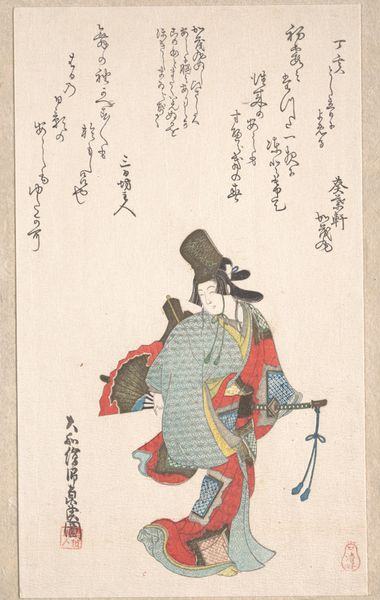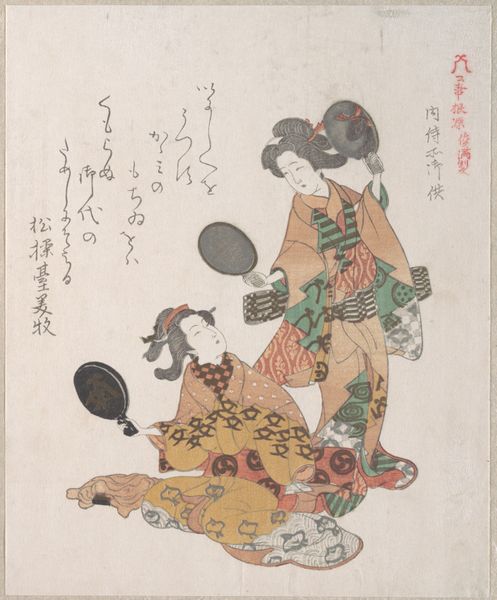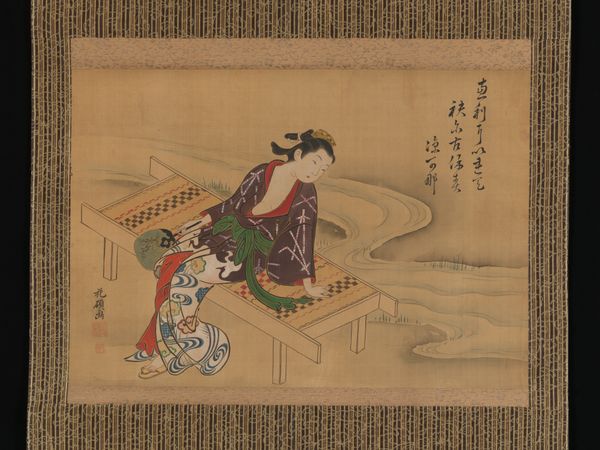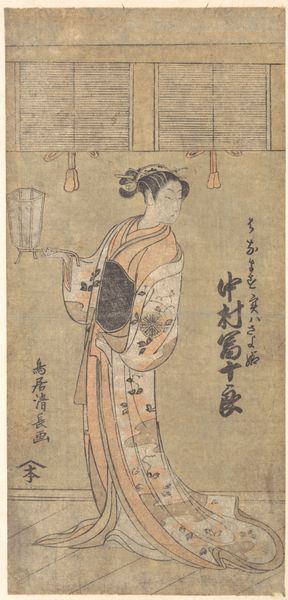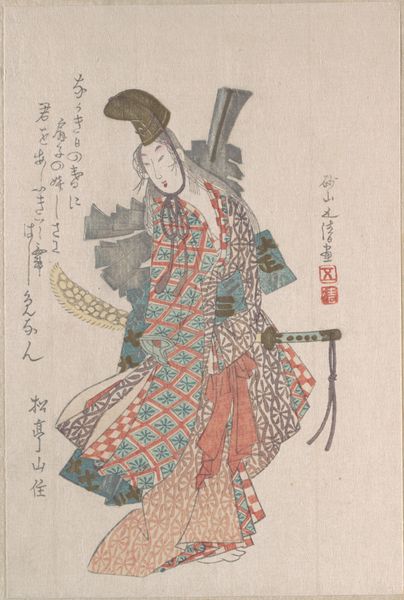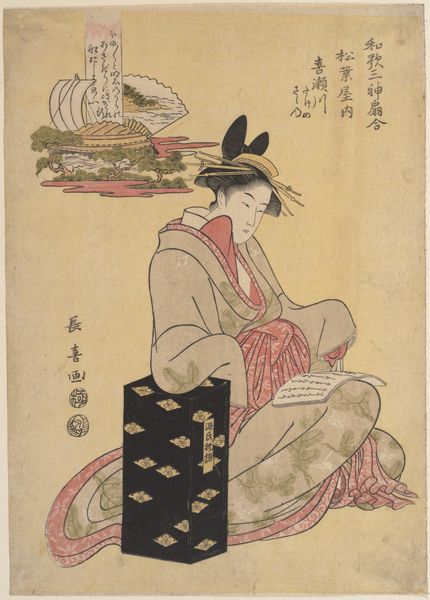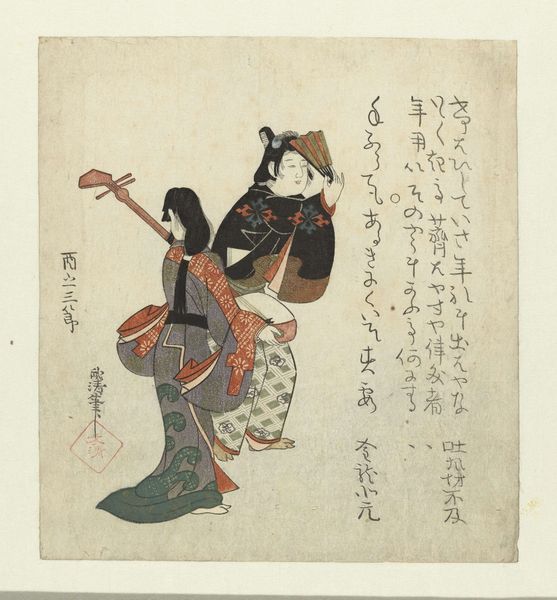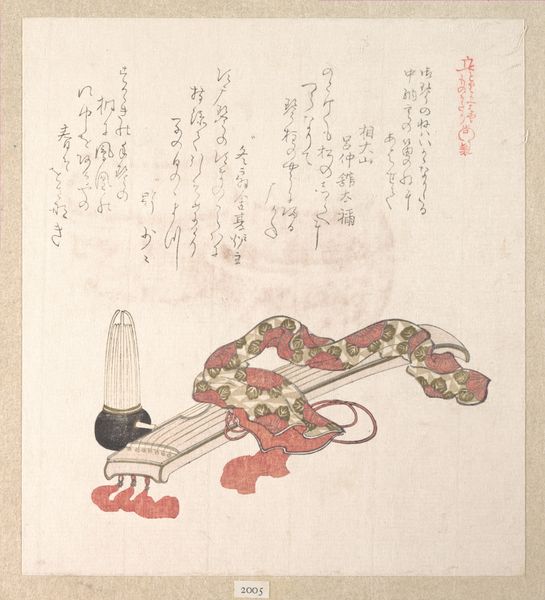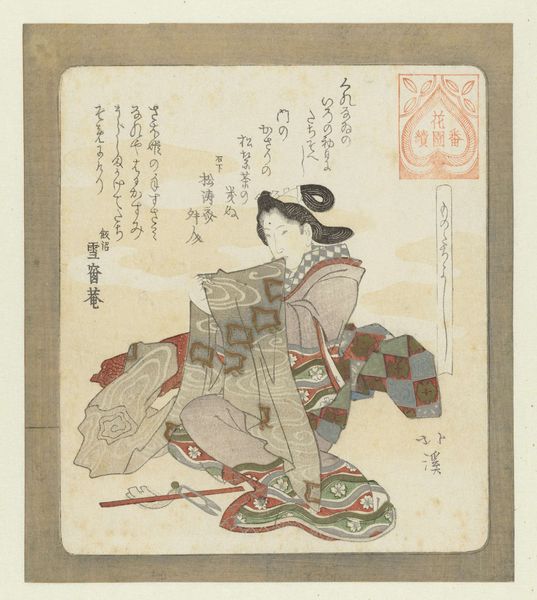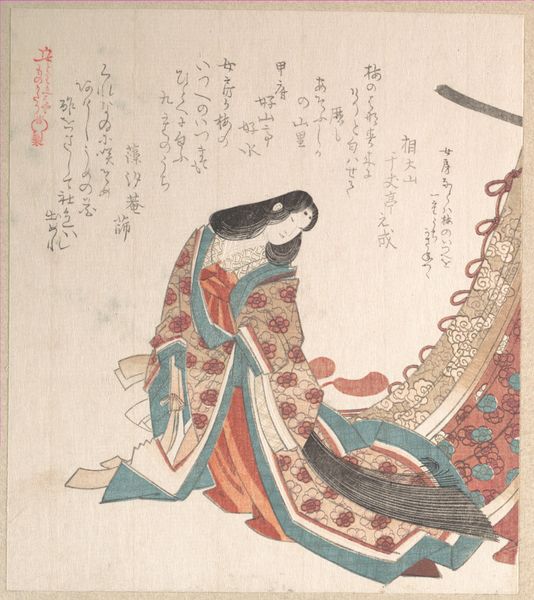
print, woodblock-print
#
portrait
# print
#
asian-art
#
ukiyo-e
#
woodblock-print
#
genre-painting
#
musical-instrument
Dimensions: 7 15/16 x 7 1/16 in. (20.2 x 17.9 cm)
Copyright: Public Domain
Curator: Here we have Kubo Shunman's "Woman Playing on the Shamisen," created around 1815. It's a woodblock print, a beautiful example of Ukiyo-e, housed here at the Met. Editor: It strikes me immediately with its gentle grace. The woman's posture, the soft colors, the overall composition evokes a sense of calm intimacy. Curator: Ukiyo-e prints like these weren't just art objects; they were vital cultural documents. This one presents an intimate snapshot of leisure in the Edo period. Images like these played a role in shaping ideas about entertainment and female accomplishment within Japanese society. Editor: Absolutely, and the shamisen itself is laden with symbolism. It's not merely a musical instrument; it represents the arts, cultural refinement, perhaps even subtle allusions to geisha culture. The seated pose itself is so common. The shape and placement of that dark curved hair is a perfect response and frame of the upper instrument’s curved features. Curator: Exactly! The details in her kimono and the delicate lines of the shamisen, were intentionally and precisely printed and signal this image's position within the broader context of print production. Were it made for mass appeal or a specific niche of interested buyers? The image of an elegant woman engaged in a cultivated pastime appealed to the tastes of the upwardly mobile merchant class. Editor: You can almost hear the music, you know? Though silent, this piece resonates. The presence of musical notes written here adds another layer of this. What sort of meanings do you see at work there? What type of experience are we intended to witness through its lens? Curator: It reinforces this moment's placement in artistic culture, it presents context on how artistic practices and social customs intersected and reinforced each other in early 19th-century Japan. In art of this kind, we glimpse the interconnectedness of representation and reality. Editor: The quietude, however, remains dominant for me. It suggests personal reflection even amidst its cultural encoding, so I really connect with the woman as subject despite our historical distance. It's amazing. Curator: And hopefully gives you a wider scope of understanding its time.
Comments
No comments
Be the first to comment and join the conversation on the ultimate creative platform.
